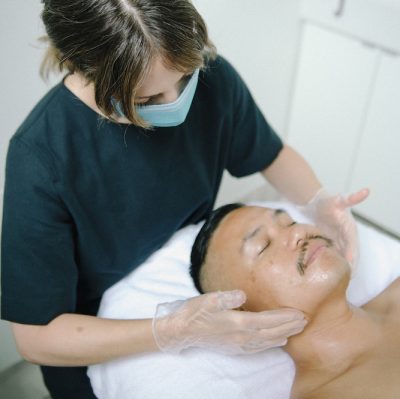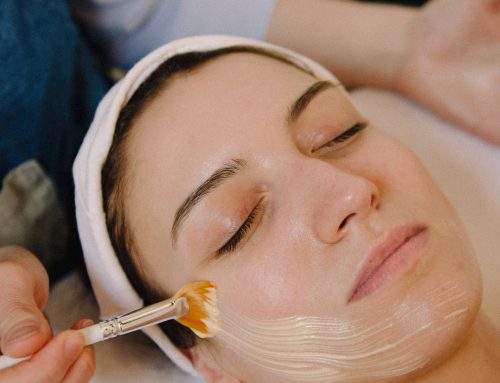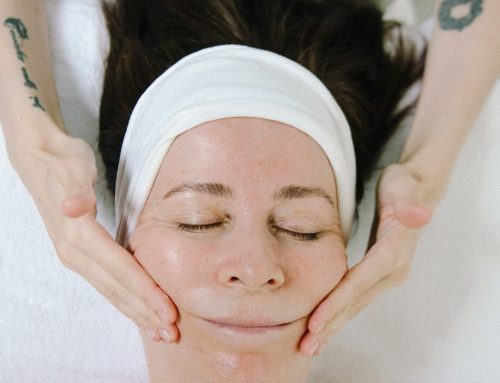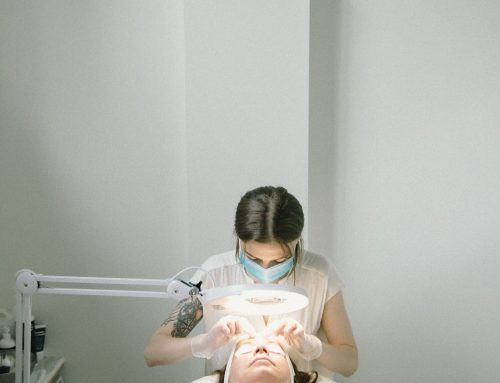 When you are ready to take control of your skin journey, one of the first things you may ask yourself is how often to get facial treatment. This guide breaks down the science behind the ideal frequency of how often to get facial treatment and includes helpful tips for maintaining healthy skin.
When you are ready to take control of your skin journey, one of the first things you may ask yourself is how often to get facial treatment. This guide breaks down the science behind the ideal frequency of how often to get facial treatment and includes helpful tips for maintaining healthy skin.
The science behind how often to get facial treatment
Let’s start by discussing the science behind why regular facials improve your skin.
The skin on your face and body renews itself regularly—every 40 to 65 days on the face and 28 to 40 days on the body. When this turnover occurs, the surface dead skin cells are shed away to reveal healthy new cells. However, the timing of how quickly the skin renews itself can be influenced by factors such as general health, hydration, and age (more on this below).
By getting frequent professional facials, we are taking the timing of this cell renewal process into our own hands—speeding it up to mimic the skin regeneration pace of younger skin. By doing so, we are gaining some pretty significant skin health benefits such as:
- reduced acne: by minimizing the build up of excess dead skin cells, we avoid the plugs of dead skin and sebum that form in the follicle and lead to comedones and blemishes
- reduced sun damage: damaged cells are replaced by new cells revealing a brighter and more even skin tone
- fine lines, wrinkles, and pores are minimized: speeding up cell turnover initiates the production of collagen thus improving skin firmness
Now that we understand how regular facials improve overall skin health, let’s get into some of the other factors to consider when deciding how often to book in for a treatment.
How often to get facial treatment based on your skin type
Oily/Combination Skin
The frequency of facial treatments can vary based on your skin type. For instance, if you have oily skin you may find it helpful to start by getting a facial treatment every two weeks to keep your skin clean and clear. You would not follow this cadence on an ongoing basis, but just until you find your skin is in a good place—generally after about the 4th treatment. Thereafter you may find you only need to get a treatment once a month to maintain your skin.**We are talking about oily skin, NOT acne-prone skin which may require more frequent treatments for a longer period of time. We’ll discuss this more below.
Dry or Sensitive Skin
If you have dry skin or sensitive skin, getting a facial once a month to keep your skin hydrated and moisturized, is a good rule of thumb. After coming in every 4-6 weeks consistently for about 3 months you will start to see lasting improvements in your skin—not unlike when you stick to an exercise routine—dedication and consistent effort pays off over time.
How often to get facial treatment based on your age
Consider that at age 18 your skin renews itself every 18 to 21 days compared to age 50 when it can take anywhere from 60 to 90 days for this process to occur.
There are many factors that lead to changes in our skin over time. The cell renewal process begins to slow down which means our skin is not producing as much collagen or hyaluronic acid. Simultaneously there are environmental and lifestyle factors that lead to the breakdown of existing collagen. This one-two punch leads to changes in the texture of the skin, the appearance of the pores, skin firmness and elasticity. Wrinkles and fine lines become more prevalent; loose skin changes the shape of the face and the look of our features. These changes start to appear as early as your late twenties, but become more rapidly evident after the age of 40—most specifically for women as estrogen and progesterone production slows down. Consider that at age 18 your skin renews itself every 18 to 21 days compared to age 50 when it can take anywhere from 60 to 90 days for this process to occur. These numbers definitely reinforce how helpful a professional facial can be. If the signs of skin aging are a concern for you, getting a facial treatment every two to four weeks will help to slow down, and in some instances reverse common skin aging concerns.
How often to get facial treatment based on your lifestyle
Your lifestyle can also affect how often you need a facial treatment. If you live in a polluted area, work in job that exposes you to a lot of dirt and grime, or spend a lot of time outdoors, committing to a monthly facial treatment will help you to limit the impact of negative external factors and maintain clean and healthy skin.
How often to get facial treatment based on your skin concerns
If you have specific skin concerns such as acne, scarring, or hyperpigmentation, a series of more frequent treatments can help to address these issues. Depending on the treatment plan, you may need to come in weekly or bi-weekly at first and eventually tapering off the frequency of treatment as your skin improves.
The aforementioned skin conditions can be stubborn and take time and dedication to address. But rest assured, you can see significant improvements by following the guidance of a certified skin therapist when addressing a specific concern.
How often to get facial treatment based on your budget
Facial treatments can be costly, so your budget may also play a role in how often you get a facial treatment. If you cannot afford to get a facial treatment every month, consider getting one every other month or every three months to still reap the benefits of regular facials.
How often to get facial treatment based on your at-home skincare routine
Your at-home skincare routine can also affect how often you need a facial treatment. If the products you are using are suited to your needs and you follow your routine like clockwork morning and night, you may be able to go longer between professional skin treatments. However, if the products you are using aren’t right for you, or you don’t follow a consistent skincare routine, you may need to get a facial treatment more often to get your skin back on track.
Where to get facial treatment
Now that you have some clarity on how often to get a facial treatment, you will want to think about where to get one. We could (and probably will) write an entire blog on how to choose a skincare clinic, but for now we’ll keep it brief. Here a three key things to consider:
What are the qualifications of the treatment provider?
In British Columbia the field of aesthetic is unregulated, so you want to ensure that whoever you work with is certified by an accredited institution.
Learn more about our certified skin therapists and their qualifications.
What products do they work with?
Many clinics use the same products that you can buy off the shelf and use at home. To ensure you are getting the most from the investment you are making in a professional treatment, look for a clinic that works with a professional-level product range. These products have higher concentrations of active ingredients and provide results that cannot be achieved at home.
We work with Dermalogica—a product range that includes retail products for at-home use as well as professional-use products exclusive to the treatment room.
Are the treatments customized?
Beware of cookie-cutter facials! If your treatments do not vary or you get the same treatment as your friend, you are not getting the most out of your time and investment. The mark of a true skin expert is someone who can analyze your skin and develop a treatment plan that is perfectly suited to you (and you alone) for each and every visit.






Leave A Comment